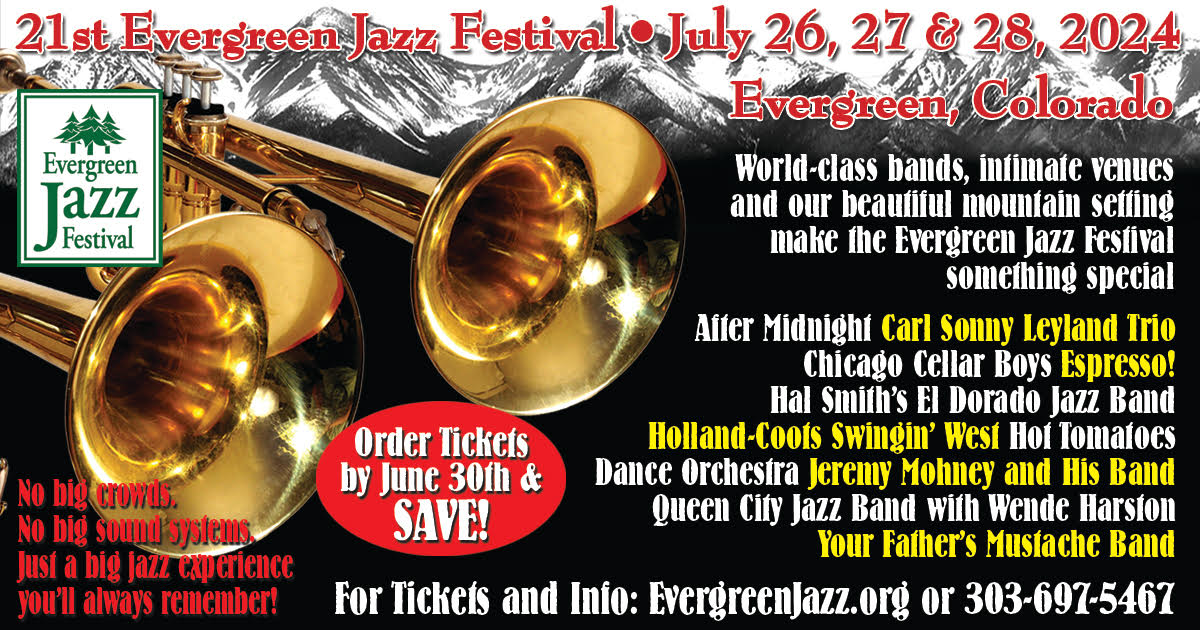Ask a top swing dancer (or any swing dancer) what first brought them to the hobby, and most will reply: “the music.” Less often does this path go the other way, with a dance obsession kicking off a music career. And yet Michael Gamble—a player, arranger, transcriber, and bandleader with whom big names boast of working—is an example of just that. The Asheville, NC native has a degree in jazz performance and leads one of the hottest dance bands on the scene. But the co-founder of Lindy Focus—one of the hottest dates on the dance calendar—came to music the long way round, with a lot of lost time to make up for.
Unlike many multi-instrumentalists, Michael didn’t pick anything up from an early age. “I was raised with a lot of instruments in the house, but they were just fun toys—no one had any training,” he said. “I did piano lessons for a year in middle school, but otherwise I wasn’t on any music trajectory.” It was in his twenties, with little interest in jazz (“Maybe I’d heard it in a commercial, but it was never the center of my attention”), that a friend handed him a swing mixtape. Soon, Michael found himself at a Lindy hop class. “I instantly found this world just incredibly deep and rich, and it was easy to fall head over heels,” he said. “Dancing just consumes everything in your life, and that very quickly happened for me.”
In no time at all, he was attending every class he could find, scouring the web for every article, blog post and video to learn all the steps and styling he could. Inevitably, an obsession with life’s new soundtrack followed. “I was in love with all of these unfamiliar moods and textures,” said Michael. “I bought a CD with the intention of practicing dancing to it—early Ellington, pre-swing, but innovative with wild arrangements. It was lousy for dancing because it was too fast and didn’t have the right beat, but I was captivated.”
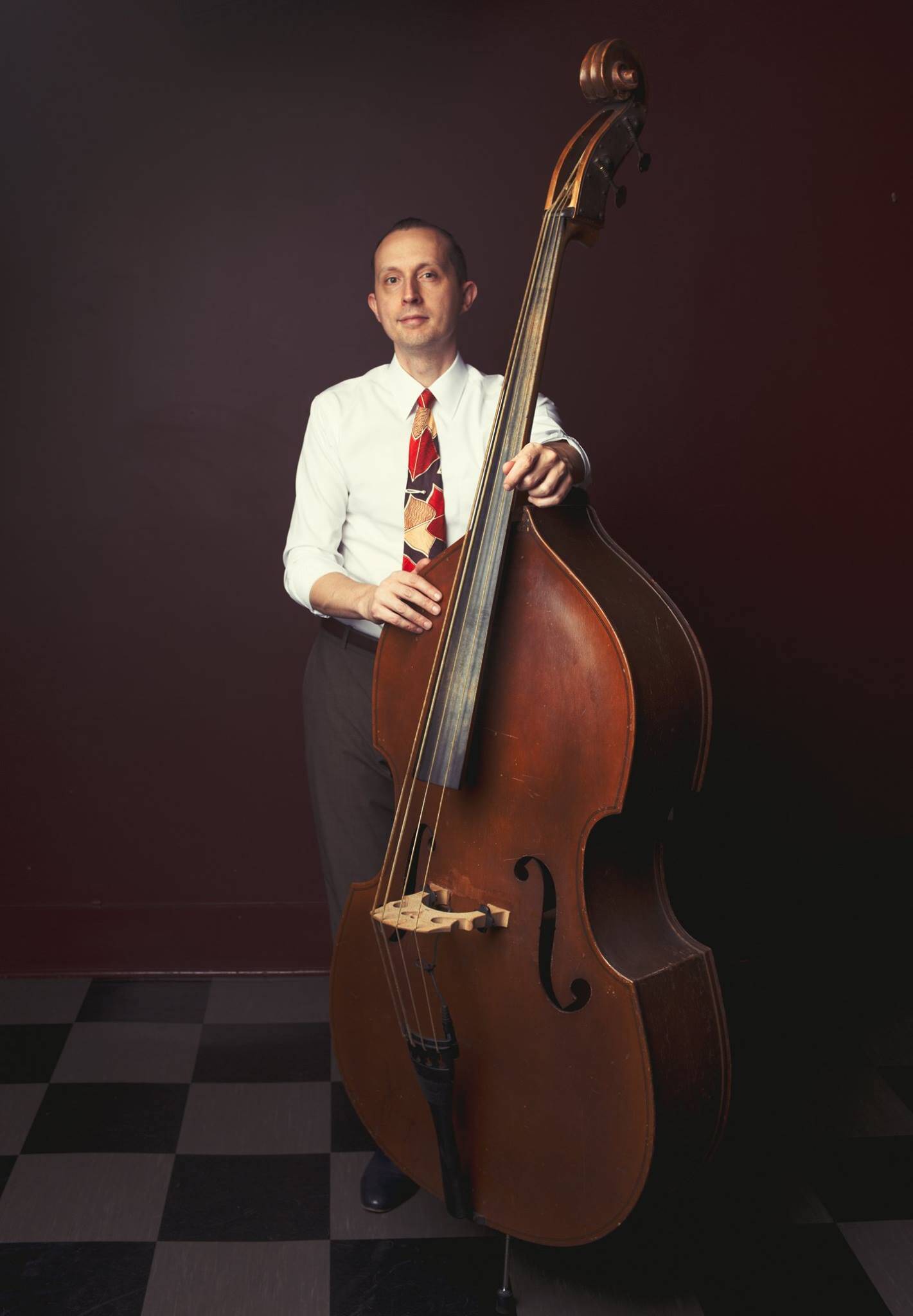
An early trip to Herräng Dance Camp, the Lindy hop Mecca, put him on the right track. “Music there was so consistently 1936–45 stuff,” he said, “exciting and complex and accessible in a way later jazz isn’t.” Soon, just listening was no longer enough. “I wanted to experience it more,” said Michael. “So I found a piano teacher, crammed as much theory as I could within three months, and faked my way through three jazz standards for the audition to the jazz program at UNC Asheville.”
Swing dance had lit the fire under Michael’s musical ambitions—and he just couldn’t stoke it fast enough. “I just had time to go all in,” he said. “I was early for every class. I was listening to aural training CDs in the car for fun. I felt like I was playing catch-up and had a lot of ground to cover.” But the more he learned, the more there was to learn. “The further in you get, the more you realize there’s no such thing as learning it all,” he said. “The depth of mastery you can reach in jazz—it would just be wildly arrogant to say I’m anything other than a constant student.”
He graduated as, in his words, a “passable professional dancer and hirable pianist”—having also met his wife Jaya and co-founded Lindy Focus with her—then promptly dropped music for six months. “It was typical burnout,” he explained. “Also, colleges focus on modern styles and I wanted to play old stuff.” When he came back to music, he didn’t want to play piano at all. “I wanted to play bass, so I bought one from a local bluegrass player,” he said. “It was a cheap one, but good enough to learn.” And learn he did—but not the college way.
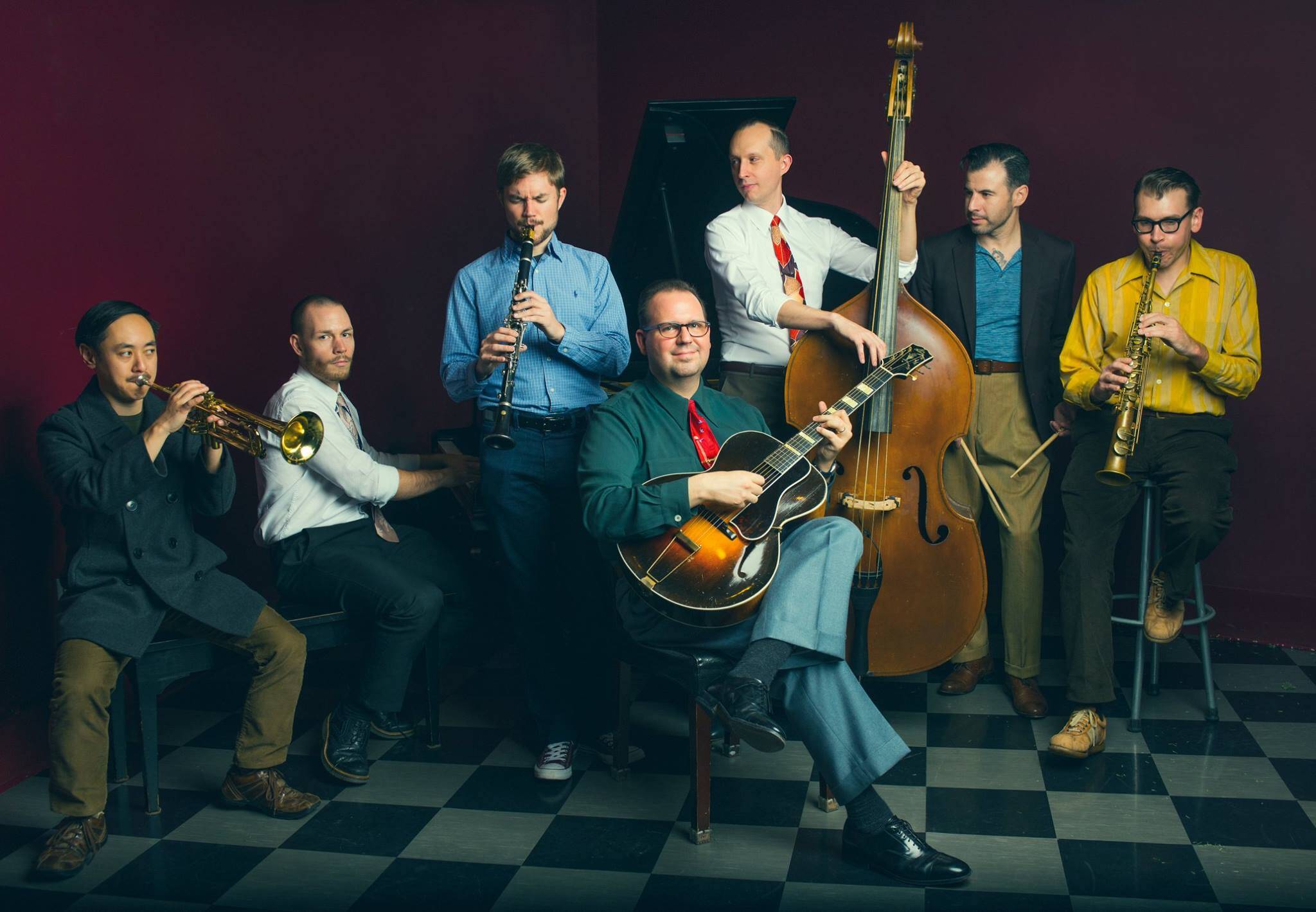
Tired of “formula training,” Michael knew he “had to come at it differently this time,” So he listened, copied, and transcribed—something which would come in handy years later. “I feel a personal connection with the bass that I didn’t with piano, because I spent the time and dug up the information,” he said. Still, he’s as modest about his bass playing as about everything else he has achieved in a relatively short jazz career. “I’m in constant awe of the people I work with,” he said. “There’s a whole mix of people coming at it from all different angles. A wide age range, people from big cities and small towns who’ve stumbled into early jazz because they love it.”
Michael has since worked with many of those he came to admire. Laura Windley, Gordon Au, Eric Heveron-Smith, Jonathan Stout, Jonathan Doyle, and many more have joined him on stage or in the studio. Again, dancing was the catalyst. “Lindy Focus eventually got so big that we had the resources to hire all my favorite living swing musicians,” said Michael. “I hired them to come and play, got to know them and we became friends. So when I was ready to play festivals with my band, I already had them on speed dial. I just weaseled my way in. And still to this day I’m playing with people I consider role models.”
His band is the hard-swinging, shapeshifting Rhythm Serenaders. As in the Jazz Age, Michael drafts his sidemen from wherever he happens to be booked. “That’s my favorite thing, pulling together different artists,” he said. “It’s very convenient because I purchase fewer plane tickets—but it’s artistically important too.” He added: “Teddy Wilson And His Orchestra almost never recorded the same line up twice, and that’s why I love listening to his recordings. Especially the ones he made with Billie Holliday—that’s my favorite swing music ever recorded, real desert island stuff.”
As a sextet, the Serenaders specialize in “careful transcriptions and subtle adaptations” of Benny Goodman. “His sextet made a real impression on me,” said Michael. “It’s that configuration of people and the arrangements they put together, which were utterly unlike anything before or after—extremely intricate, organized, riffy, small group jazz. They could take a twelve-bar blues and just go for chorus after chorus using arrangement tricks. That was my education, transcribing those arrangements and finding out what made them tick.”
Michael’s octet line-up performs arrangements popularized by medium-sized outfits like those of Fletcher Henderson, Coleman Hawkins, Duke Ellington, and Lionel Hampton. “One of my recent interests is Mary Lou Williams, especially when arranging for Andy Kirk,” he said. “Her stuff has got this utterly unique character.” He added: “I feel like it’s important to say the great arrangers all had these wonderfully innovative quirks to their sound, and the likes of Glenn Miller’s band didn’t carry forward those quirks—their mission was broad appeal and the exciting stuff got swept under the rug.”
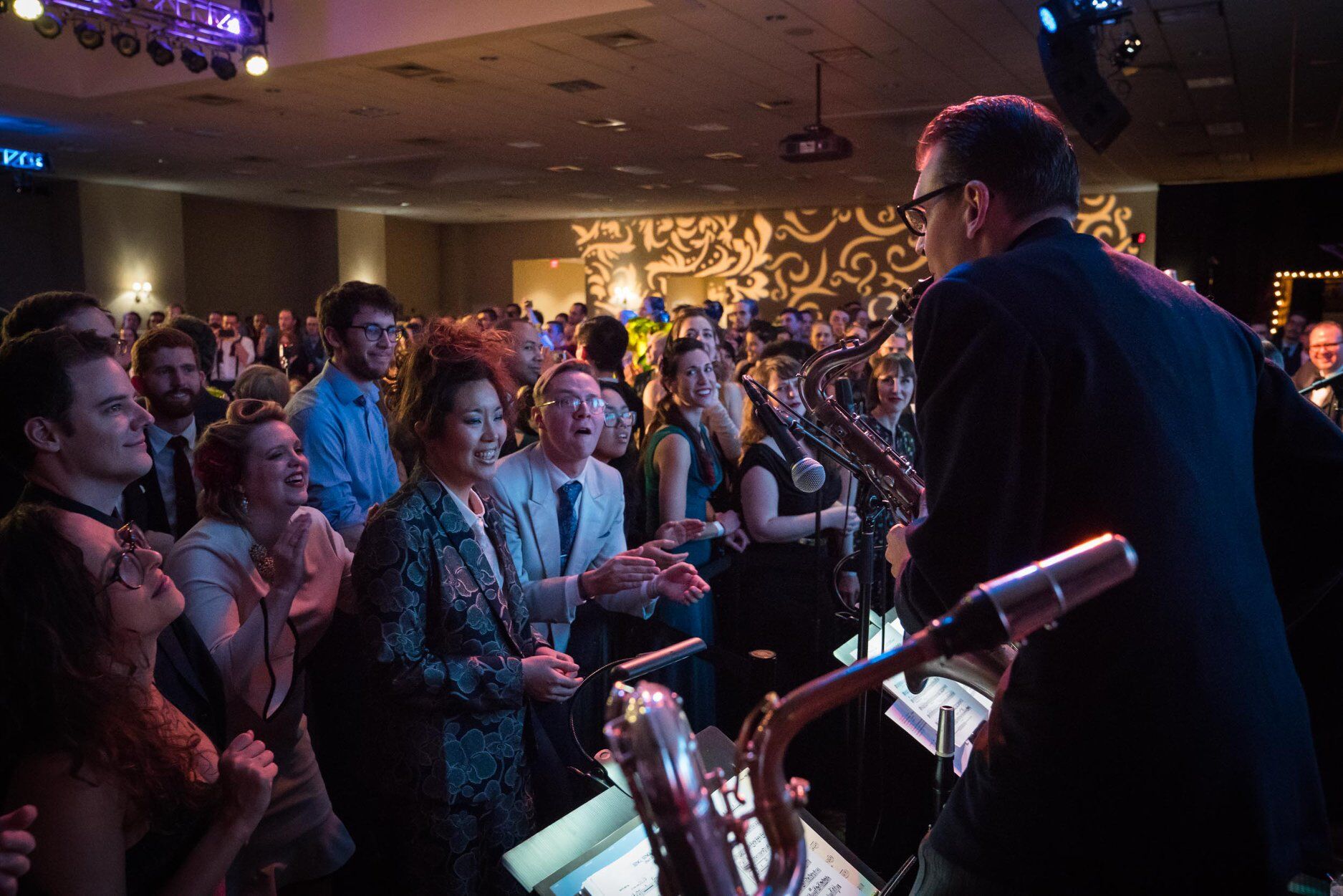
The Rhythm Serenaders Orchestra blows Michael’s arrangements up for a thirteen-piece big band, with a particular penchant for Count Basie. “Big band was never musically as interesting to me as small group stuff,” said the big bandleader, “but once I got really into arranging, it became super-important to me as the ultimate arranging palette. That’s my current jam—dissecting big band stuff.”
Playing this big band stuff at Lindy Focus, Michael became frustrated at the lack of charts for some of his favorite groups. “A big band’s repertoire is what charts they own. We would play one night of Artie Shaw, one of Benny Goodman and so on, because we had the material,” he said. “But we couldn’t do the likes of Chick Webb—it seemed unjust that this band, which was so famous in Harlem at the birth of Lindy hop, wasn’t being played because there were no charts.” The result was a crowdfunder, paying professional transcribers to write those charts from records—the Heritage Sounds project. “Our goal was a whole night of Chick Webb music that any band could download and perform,” said Michael, “and it totally worked.”
He followed this success up with charts for Jimmy Lunceford, then Lionel Hampton. “We wanted to offer all of this for free, but it’s still under copyright,” he explained. So he licenced the charts, but at a substantial cost. “It’s a constant treading-water situation,” said Michael, “but the charts are there and we’re trying to improve that offering.” Current obsession Mary Lou Williams is next to have her music recreated on paper, specifically her arrangements for Andrew Kirk. “There’s just this simmering intensity and innovation [in her music], combined with a sort of relaxed, Kansas City aesthetic,” said Michael. “It’s just everything I love about swing, and thirty charts is our goal.” When the project began, Michael “wasn’t good enough” to include his own material, he says with typical modesty. (“One of our transcribers was Benny Goodman’s band librarian. His work is beyond reproach academically, very respectful to the source material.”) But he has since seen fit to contribute his own work.
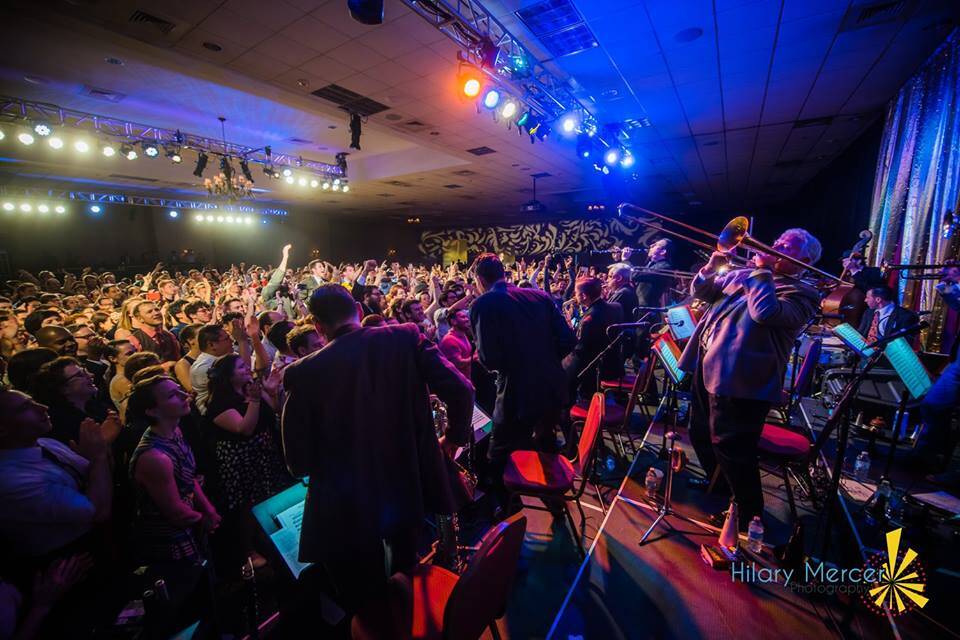
With such dedication to reviving great music, Michael has musicians flocking to play with the Serenaders. “I try to make it a band people would be excited to play in,” he said. “I want to dig up recordings they would be excited about, and play accurate transcriptions.” He also tries not to treat his bandmates as “interchangeable chairs,” but program material which shows off their own style. “But the main thing, I hope, is the chance to play music you’ve been a fan of your whole life but you haven’t been able to,” he added. “There are a lot of filters to go through, before you can play jazz at a high level with high-level people, so reliving that moment when you first put headphones on and heard that song, that’s a magical experience for me—I like to think there’s a possibility of creating that moment of, ‘Wow, we get to play this?’ If I bring anything rare to the table, it’s that willingness to write out complicated arrangements, sitting for hours and hours, in front of notation software—I love doing that, so some of this old stuff can come to life.”
Sometimes, Michael’s bandmates have spent even more time listening to these (previously) chartless tunes than he has. “My favorite moments are putting a chart in front of someone, and they will look at me and say, ‘Do you want me to play this, or play what’s on the record?’” he said. “These are people who know the arrangement by heart and have been waiting ages to perform it—that’s a thrill to me, when it happens.”
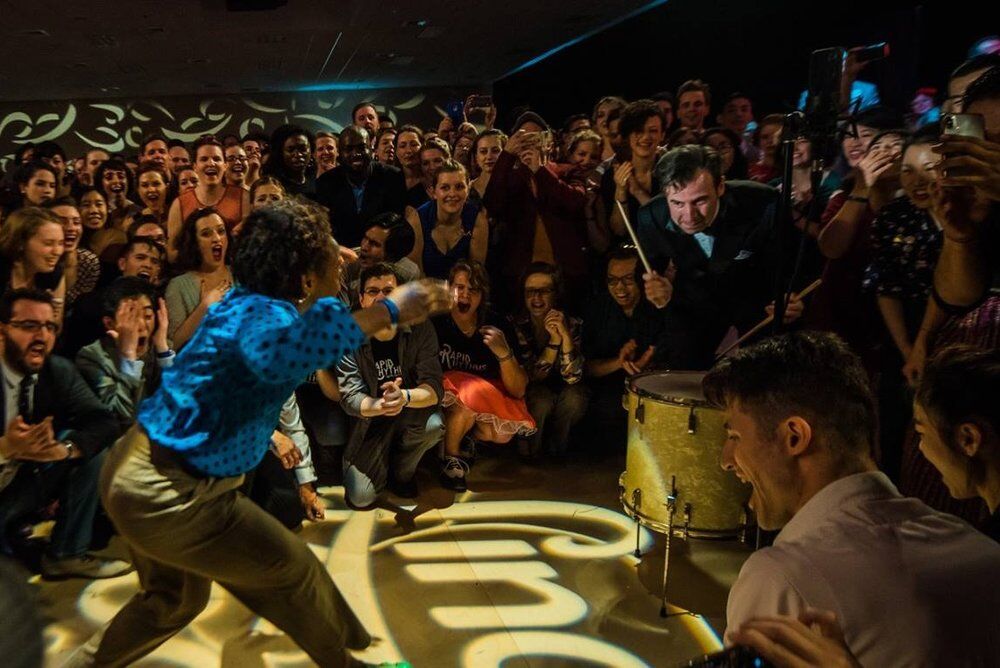
Of course, it hasn’t happened all that much over the last twelve months. So Michael has had to make do with remote recording projects. “It was desperately sad that this dream life I had built was unravelling,” he said. While his friends were recording remotely, Michael was skeptical. “I thought, ‘What kind of art can you achieve in that isolation, using those cold assembly techniques?’ But you just fake it, pretend you’re on a good gig and have fun—the same way you do live, sometimes. You come in strong and the energy builds over the performance. So I said, ‘Let’s see if we can achieve that—just record as if we’re having the gig of our lives.”’
He emailed a few musical friends and, unsurprisingly, almost everyone said yes. “They were so bummed at what was going on too,” said Michael. “I had enough people to do four bands, and I didn’t want to say no to anyone—so I decided to record four albums and try to use everyone.” Worried that the result might feel like “a soulless exercise,” Michael was pleased to find himself part of “a meaningful art project, fusing personalities” into unique—if less-than-perfect—recordings. “I knew I couldn’t control the rooms people recorded in, the microphones they used and so on,” he said, “but if someone was having a good performance I could use it. And I learned a lot about how to make the most of it.”
With plenty of practice, Michael has since advised on others’ remote recording projects. “I’m always excited about what the quirks and hurdles will be,” he said. “It’s about continuing to have meaningful projects and collaboration, even if it’s not a financial lifeline—people were saying, ‘Thank god I had this to work on, otherwise I would have just been staring into space.’” Michael looks forward to playing any sort of gig again, but particularly for dancers. “We can’t wait for big dance events with lots of attendees,” he said, “so we have the resources to hire lots of people. But they will be the last thing to come back, so we’ll just have to wait and see.”
He also plans to hit the dance floor himself, when he can—something he has neglected somewhat, since his music career took off. “By 2019 I’d dance during my own band’s break, if I was really feeling it,” he said. “But I think about it all the time now. Maybe it’s just nostalgia, but it’s powerful stuff.” He added: “I do worry that it will never be the same, now people know the risks they’re taking. But I think we will be able to bring back the best of what we’ve lost.” Indeed, with the Rhythm Serenaders and the Heritage Sounds Project still working hard, the best may be yet to come.
Follow Michael Gamble on Facebook, or learn more on the band’s website. Also learn more about Lindy Focus at the event’s website.






